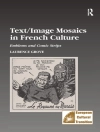The early modern Mediterranean was an area where many different rich cultural traditions came in contact with each other, and were often forced to co-exist, frequently learning to reap the benefits of co-operation. Orthodox, Roman Catholics, Muslims, Jews, and their interactions all contributed significantly to the cultural development of modern Europe. The aim of this volume is to address, explore, re-examine and re-interpret one specific aspect of this cross-cultural interaction in the Mediterranean – that between the Byzantine East and the (mainly Italian) West. The investigation of this interaction has become increasingly popular in the past few decades, not least due to the relevance it has for cultural exchanges in our present-day society.The starting point is provided by the fall of Constantinople to the troops of the Fourth Crusade in 1204. In the aftermath of the fall, a number of Byzantine territories came under prolonged Latin occupation, an occupation that forced Greeks and Latins to adapt their life socially and religiously to the new status quo. Venetian Crete developed one of the most fertile ‘bi-cultural’ societies, which evolved over 458 years. Its fall to the Ottoman Turks in 1669 marked the end of an era and was hence chosen as the end point for the conference. By sampling case studies from the most representative areas where this interaction took place, the volume highlights the process as well as the significance of its cultural development.
Angeliki Lymberopoulou
Cross-Cultural Interaction Between Byzantium and the West, 1204-1669 [PDF ebook]
Whose Mediterranean Is It Anyway?
Cross-Cultural Interaction Between Byzantium and the West, 1204-1669 [PDF ebook]
Whose Mediterranean Is It Anyway?
Compre este e-book e ganhe mais 1 GRÁTIS!
Língua Inglês ● Formato PDF ● Páginas 370 ● ISBN 9781351244947 ● Editor Angeliki Lymberopoulou ● Editora Taylor and Francis ● Publicado 2018 ● Carregável 3 vezes ● Moeda EUR ● ID 6180184 ● Proteção contra cópia Adobe DRM
Requer um leitor de ebook capaz de DRM












